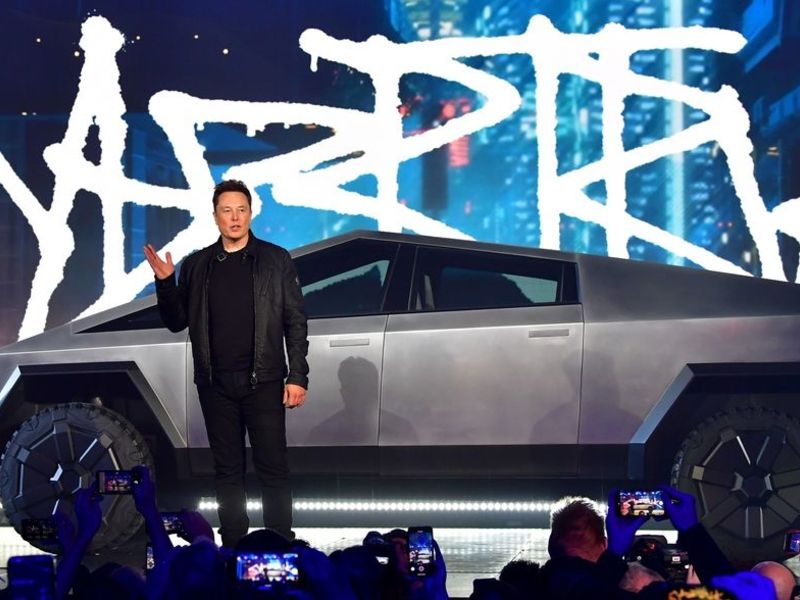
Back when Tesla Inc. delivered 95,000 cars to customers during the spring quarter of 2019, the stock price was languishing at about $235 and Elon Musk’s electric car company was valued at “only” $40 billion. Fast forward a year and the shares are now priced at more than $1,200. With a market capitalization of $224 billion, Tesla has surpassed Toyota Motor Corp. as the world’s most valuable automaker.
Yet in the second quarter of 2020, Tesla delivered 91,000 vehicles — about 5 percent fewer than the same period last year. That’s pretty underwhelming for a company whose fans view it as a fast-growing technology company in the mold of Amazon.com Inc., rather than a sluggish metal-bashing carmaker. So how is the massive recent jump in its market value justified?
In fairness, it shows resilience to sell this many cars when the company’s main California plant was shut by the pandemic for much of the spring period. Doubtless, Tesla’s new Shanghai plant picked up the production slack, which suggests the expense and effort of getting that China factory up and running was worth it. The launch of Tesla’s new Model Y crossover vehicle will have helped. Ford Motor Co. and General Motors both saw their U.S. deliveries decline by a third in the same quarter.
Nevertheless, Tesla’s stock market acolytes pushed the shares up another 8 percent on Thursday last week, adding $16.5 billion to the market value. Such exuberance is hard to understand. Musk’s company sold 7,650 more vehicles than analysts expected during the second quarter, and the stock price jump equates to about $2 million of added shareholder value for each of those additional sales. This seems a little excessive given that a Tesla Model 3 sells for less than $40,000, and the profit margin on those cars is pretty slim.
The shareholder reaction makes even less sense when you consider that Tesla investors aren’t really meant to buying the stock because of the company’s current sales, which are less than 4 percent of Volkswagen AG’s. Rather, the investment case is a long-term one: that it will come to occupy a dominant position in clean transport and energy in the years ahead. That explains why the shares trade at 320 times its analyst-estimated earnings this year. Viewed through this lens, Tesla’s ability to shift a few thousand extra cars in recent weeks shouldn’t matter so much for the valuation.
Investors’ tendency to overreact to Tesla news made more sense when its survival was open to doubt. A year ago it was laying off workers, U.S. sales were slowing and its retail strategy was confused. Senior staff kept heading for the exit. The company was burning through cash and ran pretty low on financial fuel. It had just $2.2 billion of cash in March 2019, compared with more than $8 billion now.
But subsequent evidence that Tesla can sell cars for more than it costs to produce them has transformed the mood — and with it Tesla’s stock price.
Instead of “killing” off Tesla, the tepid electric offerings of established carmakers such as Audi and Mercedes have only underscored the quality of their rival’s battery and powertrain technology (the same can’t be said of Tesla’s build quality). Volkswagen’s software problems with its forthcoming ID.3 electric vehicle suggest catching Tesla won’t be straightforward, even with the Germans’ vast resources.
Tesla’s stratospheric valuation appears to have become self-reinforcing. Should it require more money to fund its roughly $9 billion of capital expenditure over the next three years, it can raise it from shareholders without worrying about diluting them too much.
Similarly, holders of more than $4 billion of convertible bonds that Tesla issued to fund its expansion should be happy to convert them into stock, rather than demand cash repayment, taking some of the pressure off the company and its balance sheet.
Still, Tesla’s valuation remains impossible to justify by any standard metrics. Analysts’ average price target is more than 40% below the current level. Even Musk has suggested that the share price, which has almost trebled since the start of 2020, is too high — although, as with his taunting of the U.S. Securities and Exchange Commission and his comments about “fascist” lockdowns, it’s usually better to tune out what Musk says and focus on his actions instead.
The skeptics might have more faith in Tesla’s new position as the leader of the automaker pack when Musk stops his provocations and his shareholders stop getting giddy over modest good news.